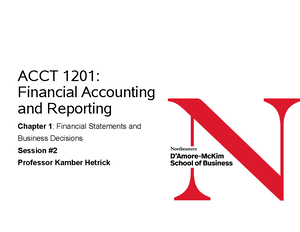- Information
- AI Chat
Hallstead Jewelers Case Study, By Kat Spivey, Luis Sanchez, Christina
Managerial Accounting (ACC 1403)
Northeastern University
Preview text
Hallstead Jewelers Case Study By Kat Spivey, Luis Sanchez, Christina Dixon, Qiao Qiao Due: 02/05/2019 Question 1: As shown in Exhibit 4 and 5, the break-even point in number of sales tickets for 2003, 2004 and 2006 are 8,575, 9,341, and 13,997. The break-even in sales dollars are $7,246,084, $7,585,237, and $11,463,622 respectively. The margins of safety are 15%, 6%, and -7%. The break-even point in number of sales tickets increased by 766 in 2004 and by another 4,656 in 2006. The break-even in sales dollars increased by $339,153 in 2004 and by another $3,878,385 in 2006. As shown in Exhibit 3, the average variable cost per unit stays nearly constant all three years. The average sales ticket decreased by $26 between the years 2003 and 2006, and there was a significant growth in in total fixed cost. This means that Hallstead needs to sell more sales tickets in order to break even. In 2007, the fixed cost increased significantly because Hallstead opened up a new store. This caused rent and depreciation to increase by $350,000 and $58,000 respectively. The margin of safety decreased by 9% in 2004 and then went down another 13% in 2006. This is due to the actual number of sales tickets decreasing from 10,153 in 2003 to 9,967 in 2004 while the number of sales tickets needed in 2004 to break even increased to 13,998. The difference in actual and break-even sales tickets decreases at a higher rate than the decrease in actual sales tickets. In 2006, the margin of safety is negative because the actual sales tickets did not reach the break-even point, which means Hallstead was losing money. This caused the margin of safety is decreasing and negative although break-even point in number of sales tickets and sales dollars are increasing. Question 2: If the consultants recommendations were put into place — a 10% decrease in price that would increase the number of unit sales to 14,000 — the projected net income for Hallstead in 2007 would be a loss of $1,012,964 — as seen in Exhibit 6. The 10% decrease in price did not result in a substantial enough increase in demand, or unit sales, to positively affect the net income. With the consultants price changes and the sales projections, in comparison to 2006, the 1 from $11,463,621 in 2006 to $11,929,528 in 2007 due to the increase in fixed costs. If the advertising budget was increased Hallstead would have to make 589 more sales in order to break even (as compared to 2006). Increasing advertising spending, without a significant increase in number of sales tickets, would result in a loss of $516,000. Hallstead should not allocate more money towards advertising. Since it increases fixed costs and results in net loss, it is not a logical step to take. Question 5: As shown in Exhibit 12, we assume that in 2007, all the variable and fixed costs remain the same from 2006. Therefore, the firms sales will have to be $11,027,000 (sum of all costs in 2006) in order to break even. While the number of sales tickets is still 13,063, the new average sales ticket will be $844, increasing of $25 from 2006 — shown in Exhibit 13. Question 6: Reviewing all the information and projections based on potential strategic implementations, we recommend these 4 strategic initiatives to Hallstead Jewelers: A. Opening the larger location was not a smart financial decision. It should not open any new stores because it increases fixed costs that they can not cover with their current sales. B. Sales commissions should be removed, as they bring high variable costs that hinder sales growth. C. Hallstead should not implement a 10% price reduction. The consultant projected that a price reduction would increase sales tickets by 937 but, sales tickets would need to increase by 3,629 in order reach the break even point. D. Expanding advertising is not advised if it does not bring in more customers because it increases the fixed costs without increasing the number of sales tickets, hindering the company from making a profit 3 EXHIBITS: Exhibit 1: Exhibit 2: 4 Exhibit 6: Exhibit 7: Exhibit 8: 6 Exhibit 9: Exhibit 10: 7 Exhibit 13: 9
Hallstead Jewelers Case Study, By Kat Spivey, Luis Sanchez, Christina
Course: Managerial Accounting (ACC 1403)
University: Northeastern University

- Discover more from:








